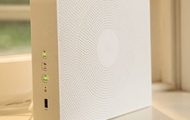Often HomePlug powerline networks are, by the name of the technology, pitched at residential networks, typically single-dwelling homes. But can a HomePlug powerline network, whether a v1.0 Turbo or an AV network exist in a block of flats, a shop or a small office?
There are many applications for the use of a HomePlug in the commercial or institutional environment. One would be to set up a network printer or other network-enabled device in a manner that allows the location to be changed at a moment’s notice. This would be of importance for equipment likely to be on the shop floor for example.
Another application would be to set up a multiple-access-point wireless network to extend the coverage of the wireless hotspot in your café or bar. One of the HomePlug wireless access points can easily do this job especially on a temporary setup or setups where you need to remove the access point at night as a security measure.
You may also want to use HomePlug for establishing a temporary network as part of an event that you host at a town hall, school assembly hall or other community facility, thus avoiding extra cables or unreliable wireless networks. Then there is the ability to try out computer-equipment locations for a certain amount of time before you have the electricians pull the Ethernet cabling to the final location.
An example of this kind of setup
At the moment, Devolo, a German company who manufactures HomePlug network devices, have “taken the bull by the horns” in its home market. They have run a German-language Web portal, about using HomePlug as a solution for establishing computer networks in schools. On this page, there are examples of three schools who have established HomePlug network segments that are known to be in full service.
AC power issues
The main issue is that AC power supplies which supply most of these locations aren’t similar to the typical residential AC power supply. These supplies typically involve a “multi-phase” wiring plan that is typically set up for larger motors or other large loads. This shouldn’t be really of concern for setups covering a flat, small shop or office because most of the power wiring is similar to that of a regular house. In the case of shops and other premises that have special equipment like large commercial refrigeration setups, the special equipment is typically wired to its own group of phases while the ordinary power outlets are wired to a single phase, in a manner similar to a domestic setup.
Similarly the large motors like those that typically drive commercial refrigeration / air-conditioning or lifts and escalators can yield interference as they are used. Similarly, arc welding and similar work equipment can increase the amount of interference in the power line. Another issue to remember is that there is very little chance of a HomePlug segment working if you plug any of the HomePlug devices in to one of those three-phase – single-phase powerboards used primarily to run large clusters of standard lighting or cooking equipment from a three-phase outlet. This is usually due to the use of transformers and different phases in these installations.
Testing a HomePlug network segment
When you set up a HomePlug powerline network segment in any of these premises that you haven’t dealt with before or where significant work has been done, you may have to do a test run at the locations you intend to set up your installation at before you run the installation full-time.
You could run the “PowerPacket” utility that comes with most HomePlug-Ethernet bridges to observe the link quality of your HomePlug segment and the existence of the other HomePlug devices that you have plugged in at the locations you want to use. The latter observation can be useful if some of the ordinary power outlets in the premises are wired to different phases. You can also observe changes in link quality when any of the heavy motors are in operation such as whenever someone is using the lift or the refrigeration compressor that serves the commercial refrigeration installation comes on.
Another test would be to do a simple network-based file-copy between computers connected to the HomePlug devices and time that copy process for actual throughput measurement. At this time, it may be worth looking for changes in network behaviour when any of the heavy motors are in operation as in the situations described above.
But before you do these tests, make sure that the HomePlug equipment you intend to deploy in the commercial environment works properly at your home or at a location where you know from experience this kind of equipment has worked. Also, make sure that you can return the HomePlug equipment to whoever you bought it from if it doesn’t work or be able to buy the equipment “on approval”.
Other setup issues
Another good practice with deploying HomePlug in these locations is to set up an installation-unique Network Password for the installation. This can be easily done with HomePlug AV devices that have “Simple Connect” push-button setup because the HomePlug AV devices work out a unique code for that installation. On the other hand, you would have to use the setup software like PowerPacket to align all the devices (which have the Device Passwords physically on them) to the same Network Password. This allows your HomePlug network segment to work in a secure fashion.
Once you have used HomePlug in these kind of setups, you can be able to know what it can and cannot do in a particular location and defeat the common limitation of HomePlug being just for the home.

